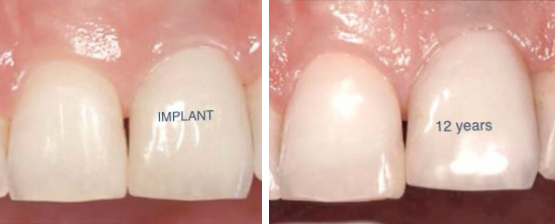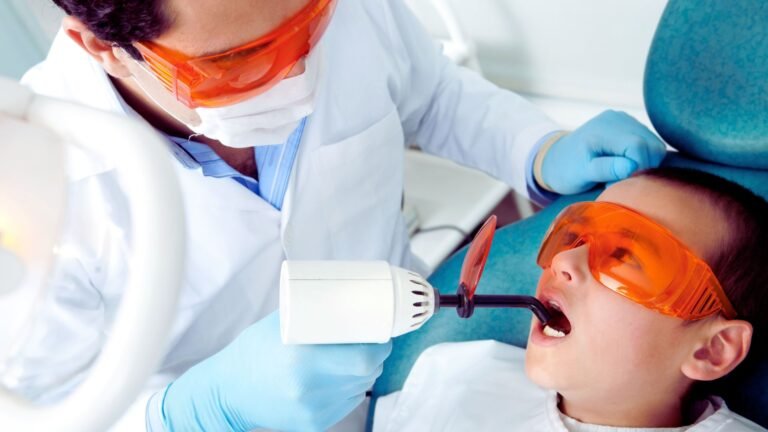Can a Cracked Tooth Cause Ear and Jaw Pain?
Have you ever wondered if your ear and jaw pain could stem from a seemingly unrelated cracked tooth? The connection might be more significant than you think. When you experience a crack in one of your teeth, the pain doesn’t always limit itself to the immediate area. Due to the complex network of nerves in your face, particularly the trigeminal nerve, this pain can radiate outward, manifesting in areas like your ear and jaw. Understanding the symptoms and the underlying causes is essential, and you might be surprised at the preventative measures and treatments available to address this issue. Why might this be more common than anticipated?
Anatomy of Oral and Facial Pain

Understanding the intricate network of nerves and tissues in your face and mouth is essential to pinpointing the source of oral and facial pain. Two critical conditions that often manifest with similar symptoms are TMJ dysfunction and trigeminal neuralgia, both involving the trigeminal nerve, the primary nerve responsible for sensation in your face.
TMJ dysfunction arises from issues within the temporomandibular joint, a pivotal hinge that connects your jaw to your skull. This condition can lead to pain radiating through the face, ear, and jaw due to its proximity to the trigeminal nerve. Misalignment, trauma, or arthritis in the TMJ can trigger severe discomfort and affect nerve function.
On the other hand, trigeminal neuralgia is characterized by sharp, electric shock-like pain due to a disruption in the trigeminal nerve. This disruption can be caused by pressure from a blood vessel or as a consequence of nerve damage from systemic diseases. Trigeminal neuralgia is distinct in its ability to generate episodes of intense, stabbing pain that can be triggered by everyday activities like speaking or chewing, highlighting the nerve’s significant role in facial sensation and motor functions.
Both conditions underscore the complexity of facial anatomy where slight disturbances can lead to significant pain, necessitating targeted diagnostic and therapeutic approaches.
Symptoms of a Cracked Tooth
While TMJ dysfunction and trigeminal neuralgia involve broader facial pain, specific symptoms such as sharp pain when biting might indicate a cracked tooth. If you’re experiencing this symptom, it’s vital to take into account the unique characteristics of tooth sensitivity that accompany a cracked tooth.
This sensitivity often manifests as a sudden, sharp discomfort when your teeth are exposed to very hot or cold temperatures, or when consuming sweet or acidic foods. Tooth sensitivity due to a crack is typically localized around the affected area. The crack can expose the dentin or even the pulp—parts of your tooth that contain sensitive nerve endings.
When these layers are exposed, stimuli that wouldn’t ordinarily cause pain can suddenly become quite uncomfortable. Pain management in such cases is pivotal. Initially, methods like avoiding extreme temperature foods or using toothpaste designed for sensitive teeth can provide temporary relief.
However, for long-term management, it’s crucial to address the crack itself. Dental interventions might include bonding, crowns, or even a root canal, depending on the severity of the crack and the extent of nerve involvement. These treatments aim to restore the integrity of the tooth and reduce or eliminate sensitivity by sealing the crack and protecting the inner tooth structures from further exposure and irritation.
Link Between Dental Issues and Ear Pain
Many patients often overlook the potential for dental issues to cause ear pain, yet numerous studies confirm this connection. This link can be traced primarily to the anatomical and functional relationships within the craniofacial region. You may not realize that the nerves supplying the teeth and jaws are intricately connected to the nerves of the ear.
Specifically, the trigeminal nerve, which is the main sensory nerve of the face, also affects your ear sensations.
Dental infections, for instance, can lead to inflammation that extends to the ear area. These infections produce cytokines and other inflammatory mediators that can exacerbate the perception of pain around your ear. This phenomenon explains why infections in the lower molar teeth, which are close to the ear, can often manifest with ear pain.
Another critical link is Temporomandibular Joint Syndrome (TMJ), a condition that affects the joint connecting your jawbone to your skull. TMJ can lead to pain radiating towards the ear due to its proximity and shared nerve pathways.
When you’re experiencing TMJ, movements of your jaw—such as chewing or speaking—can translate this tension to the ear, causing discomfort that you might initially mistake for ear-related issues.
Diagnosing Cracked Tooth Syndrome

If you’re experiencing ear and jaw pain, it’s important to consider Cracked Tooth Syndrome as a potential diagnosis. Identifying this condition accurately involves a blend of clinical examinations and imaging techniques, primarily focusing on dental X-rays. These radiographs are essential as they can reveal hairline fractures that aren’t visible during a standard dental examination.
Diagnosis starts with a detailed dental history and a thorough examination of your teeth. Your dentist will look for visible signs of a crack and check for sensitivity by using various instruments to isolate the affected tooth. Dental X-rays play a vital role here, although they don’t always detect all types of cracks, especially if they are very thin or run under the gum line.
For a more definitive diagnosis, advanced imaging techniques such as cone-beam computed tomography (CBCT) may be employed. This technology provides a three-dimensional view of your teeth, allowing for a more detailed assessment. Here’s a simplified table outlining the diagnostic steps:
| Step | Description |
|---|---|
| Clinical Examination | Visual inspection and sensitivity tests. |
| Dental X-rays | Identification of visible cracks. |
| Advanced Imaging | Employing CBPP for detailed tooth structure view. |
| Symptom Analysis | Correlation of dental findings with symptoms. |
| Consultation | Discussion of findings and next steps. |
Treatment Options and Prevention
Once your dentist confirms a diagnosis of Cracked Tooth Syndrome, they’ll recommend a tailored treatment plan to alleviate pain and prevent further damage. The cornerstone of this plan is effective pain management, often beginning with the prescription of analgesics to reduce discomfort. Depending on the severity and location of the crack, options may include dental bonding, a crown, or in extreme cases, root canal therapy or extraction. Each treatment is designed not only to manage pain but also to restore functionality and prevent the crack from worsening.
Maintaining rigorous oral hygiene is essential in preventing further complications. You’ll be advised to adopt a daily regimen that includes brushing twice a day with fluoride toothpaste, flossing regularly, and using an antiseptic mouthwash. These practices help eliminate bacteria that can exacerbate tooth decay and cause infections, potentially leading to more severe pain and complications.
Additionally, to prevent the occurrence of new cracks or damage, you should avoid chewing hard foods like ice or hard candy, and wear a mouthguard if you grind your teeth at night. Regular dental check-ups are crucial, as early detection and intervention can prevent minor issues from escalating into major concerns.
Frequently Asked Questions
Can Wearing a Night Guard Prevent Ear Pain From Dental Issues?
Yes, wearing a night guard can prevent ear pain linked to dental issues. It stabilizes jaw positioning and mitigates stress from bruxism, which often exacerbates TMJ disorders, improving overall dental health.
Are There Any Home Remedies to Relieve Pain From a Cracked Tooth?
For immediate toothache relief from a cracked tooth, you can use clove oil for its natural analgesic properties or rinse with warm salt water to reduce inflammation and pain through simple home care measures.
How Does Stress Contribute to Cracked Teeth and Related Pains?
Stress often leads to teeth grinding, which can worsen tooth fractures. Effective stress management is essential to reduce this behavior and prevent associated dental issues like cracked teeth and resulting pain.
Does the Severity of the Crack Affect the Level of Pain Experienced?
Yes, the severity of the crack influences pain levels. As cracks deepen, effective pain management and appropriate dental procedures become essential. Treatment plans might include medication options tailored to reduce discomfort and prevent further damage.
Can Children Experience Similar Ear and Jaw Pain From Cracked Teeth?
Yes, pediatric patients can experience similar ear and jaw pain from cracked teeth. Pediatric dentistry often addresses these symptoms, as the proximity of teeth to ear structures can lead to referred pain in children.
Conclusion
Conclusively, if you’re experiencing ear and jaw pain, it might be linked to a cracked tooth due to the distribution pathways of the trigeminal nerve.
Accurate diagnosis through detailed clinical evaluation and imaging is essential. Treatment, ranging from dental bonding to root canal therapy, directly targets the cause, alleviating the radiating pain effectively.
Prevention, via regular dental check-ups and avoiding hard foods, is key to avoiding such complications.
Always consult your dentist for tailored advice and treatment plans.

